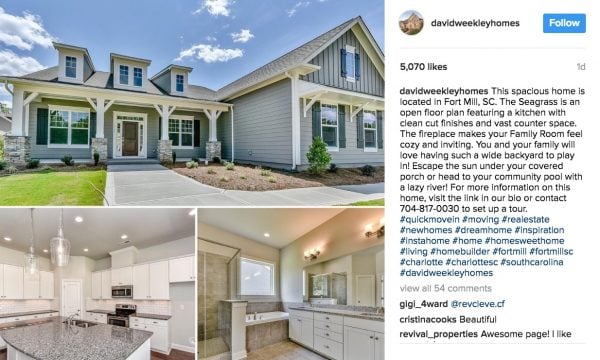
The Winning Social Media Content Strategy TV Networks Use
From a marketing perspective, there is no such thing as “social media.” It’s nearly pointless to think of social media as one thing, because the audiences, use cases, technology, algorithms, optimal cadences and other characteristics of each social platform continue to diverge.
For example, a study by CoSchedule found that the “optimal” number of daily posts on Twitter (your mileage may vary) is 15, but just one to two posts per day on Instagram and Facebook are the sweet spot.
Posting the same social media content, in multiple channels, at the same time and hoping to achieve spectacular results hasn’t worked in years—the variances are just too great among what works in each venue.
So instead of thinking about a “social media” strategy, you really need to adopt a Twitter strategy, and a Facebook strategy, and an Instagram strategy, and a LinkedIn strategy, and beyond.
Take a Cue from TV Networks
Scripps Networks owns HGTV, The Food Network, DIY Network, Great American Country, and several more. They don’t think of those channels in aggregate as “television programming.” Instead, they think of HGTV viewers, and DIY viewers, and GAC viewers because the demographic and psychographic characteristics of each viewer group differs. And more importantly, what each group WANTS from each channel varies as well.
Similarly, Walt Disney Television owns ABC News, The Disney Channels, EPSN and more. Can you imagine if ESPN randomly aired Mickey Mouse Club House and vice versa? Yeah, that would be weird.
Your social media strategy should adopt the same approach. For each social platform where you are active, identify the distinct strategy, audience, metrics, cadence, and programming that makes sense for that platform.
Social Media Channel Strategy Example (and Downloadable Template)
Here’s how it looks in chart form. Download this Social Media Channel Strategy Template.

Channel Goals
What is the overall desired outcome of being present on this platform? One goal per platform and these must tie to higher-level business outcomes.
Channel Objectives
Two specific, measurable actions that guide the progress toward the goal.
Audience(s)
Who do you want to reach on this platform? Identify one or two specific segments, with as much detail as possible.
Measurement(s)
Identify up to three metrics that either measure against the objectives, or measure something that correlates to the objectives. This is not the place for “number of followers” as a metric.
Cadence
How often you plan to add new content to this platform, expressed weekly.
Shows
Decide what two “shows” you will commit to in this platform, and on what schedule.
Think TV Shows (Regularly Scheduled Programming) for Your Social Media Content Strategy
HGTV, or any other television network, doesn’t just randomly put an episode on the air. Everything revolves around specific shows, with a defined audience and narrative arc. Social media practitioners could learn a lot from this approach. Yet, much of what happens today in social is “random acts of content” with no repeatability, tune-in value, or consistency.
For each social platform, think about what social media content initiatives you can execute on a regular basis, keeping in mind your audience and objectives for that platform. Then, create and distribute these “shows” consistently. This gives your audiences something to recognize, engage with, and (hopefully) look forward to on a regular basis.
Social Media Show Example: David Weekley Homes
Not only do shows of this type create tent poles for your social media strategy, it makes it a LOT easier to plan your time and your resources, because you know what you’re doing, in what format and how often.
Your entire social media strategy is not comprised of show episodes, but they give you the nuclei for your content, and then around them you post non-show electrons that are original, circumstantial content and/or curation.






